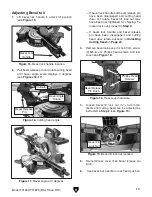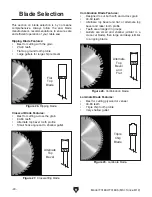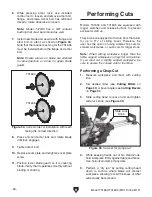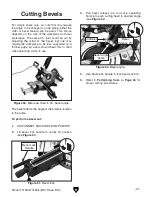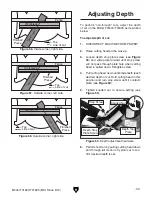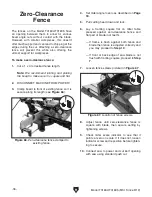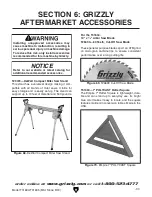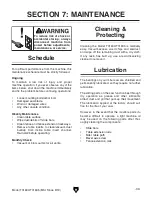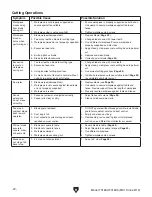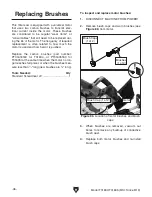
-32-
Model T31634/T31635 (Mfd. Since 8/19)
Compound Cuts
For more complex angle cuts, i.e. cuts that require
the angle to be changed on two planes at once,
the miter and bevel functions can be used togeth-
er in a "compound cut." This is most useful when
it comes to crown molding and other complex
projects.
Type of Cut
Bevel Setting
Miter Setting
Inside Corner -
Left Side
33.9° Left
31.6° Right
Inside Corner -
Rght Side
33.9° Left
31.6° Left
Outside Corner -
Left Side
33.9° Left
31.6° Left
Outside Corner -
Right Side
33.9° Left
31.6° Right
Crown Molding Angles for 90° Wall
If cutting crown molding for a 90
˚ wall and ceiling
(the standard), you would use the settings in the
chart below.
However, a skilled craftsman also needs to plan
for kerf of the blade, and whether the left or right
side of the blade will make up the finished piece.
For instance, for both inside corners in the chart,
the left side will be the finished piece. The oppo-
site is true for the outside corners.
Similarly, whether the bottom or top of a piece of
molding is against the fence will be determined
by the type of cut. See the figures on this page
and
Page 33 to determine how to position the
workpiece for the specific cut.
Inside Corner
Outside Corner
Figure 54. Crown molding on 90˚ angle.
The main thing to remember when it comes to
compound cuts is that the miter and bevel adjust-
ments are not independent—one will affect the
other.
Figure 53. Miter saw rotated to 31.6˚ miter angle
and tilted to 45
˚ bevel angle.
= Top
Table Insert
Workpiece
Fence
= Line of cut
Finished Piece
Figure 55. Inside corner, left side.
Summary of Contents for T31634
Page 64: ......


